
A | B | C | D | E | F | G | H | CH | I | J | K | L | M | N | O | P | Q | R | S | T | U | V | W | X | Y | Z | 0 | 1 | 2 | 3 | 4 | 5 | 6 | 7 | 8 | 9
| ||||||||||||||||||||||
Republic or Monarchy? | ||||||||||||||||||||||
| Voting system | Universal suffrage | |||||||||||||||||||||
|---|---|---|---|---|---|---|---|---|---|---|---|---|---|---|---|---|---|---|---|---|---|---|
| Outcome | Birth of the Italian Republic | |||||||||||||||||||||
| Results | ||||||||||||||||||||||
| ||||||||||||||||||||||
 | ||||||||||||||||||||||
| Part of the Politics series |
| Republicanism |
|---|
|
|
An institutional referendum (Italian: referendum istituzionale, or referendum sulla forma istituzionale dello Stato)[1][2][3] was held by universal suffrage in the Kingdom of Italy on 2 June 1946,[4] a key event of contemporary Italian history. Until 1946, Italy was a kingdom ruled by the House of Savoy, reigning since the unification of Italy in 1861 and previously rulers of the Kingdom of Sardinia. In 1922, the rise of Benito Mussolini and the creation of the Fascist regime in Italy, which eventually resulted in engaging the country in World War II alongside Nazi Germany, considerably weakened the role of the royal house.
Following the Italian Civil War and the Liberation of Italy from Axis troops in 1945, a popular referendum on the institutional form of the state was called the next year and resulted in voters choosing the replacement of the monarchy with a republic. The 1946 Italian general election to elect the Constituent Assembly of Italy was held on the same day.[4] As with the simultaneous Constituent Assembly elections, the referendum was not held in the Julian March, in the province of Zara or the province of Bolzano, which were still under occupation by Allied forces pending a final settlement of the status of the territories.
The results were proclaimed by the Supreme Court of Cassation on 10 June 1946: 12,717,923 citizens in favor of the republic and 10,719,284 citizens in favor of the monarchy.[5] The event is commemorated annually by the Festa della Repubblica. The former King Umberto II voluntarily left the country on 13 June 1946, headed for Cascais, in southern Portugal, without even waiting for the results to be defined and the ruling on the appeals presented by the monarchist party, which were rejected by the Supreme Court of Cassation on 18 June 1946. With the entry into force of the new Constitution of the Italian Republic, on 1 January 1948, Enrico De Nicola became the first to assume the functions of president of Italy. It was the first time that the whole Italian Peninsula (excluding Vatican City) was under a form of republican governance since the end of the Roman Republic.
Background
Republican ideas and the unification of Italy

In the history of Italy there are several so-called "republican" governments that have followed one another over time. Examples are the ancient Roman Republic and the medieval maritime republics. From Cicero to Niccolò Machiavelli, Italian philosophers have imagined the foundations of political science and republicanism.[a] But it was Giuseppe Mazzini who revived the republican idea in Italy in the 19th century.[7]
An Italian nationalist in the historical radical tradition and a proponent of a republicanism of social-democratic inspiration, Mazzini helped define the modern European movement for popular democracy in a republican state.[8] Mazzini's thoughts had a very considerable influence on the Italian and European republican movements, in the Constitution of Italy, about Europeanism and more nuanced on many politicians of a later period, among them American president Woodrow Wilson, British prime minister David Lloyd George, Mahatma Gandhi, Israeli prime minister Golda Meir and Indian prime minister Jawaharlal Nehru.[6] Mazzini formulated a concept known as "thought and action" in which thought and action must be joined together and every thought must be followed by action, therefore rejecting intellectualism and the notion of divorcing theory from practice.[9]
In July 1831, in exile in Marseille, Giuseppe Mazzini founded the Young Italy movement, which aimed to transform Italy into a unitary democratic republic, according to the principles of freedom, independence and unity, but also to oust the monarchic regimes pre-existing the unification, including the Kingdom of Sardinia. The foundation of the Young Italy constitutes a key moment of the Italian Risorgimento and this republican program precedes in time the proposals for the unification of Italy of Vincenzo Gioberti and Cesare Balbo, aimed at reunifying the Italian territory under the presidency of the Pope.[10] Subsequently, the philosopher Carlo Cattaneo promoted a secular and republican Italy in the extension of Mazzini's ideas, but organized as a federal republic.[11]
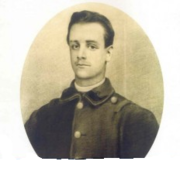
The political projects of Mazzini and Cattaneo were thwarted by the action of the Piedmontese Prime Minister Camillo Benso, Count of Cavour, and Giuseppe Garibaldi. The latter set aside his republican ideas to favor Italian unity.[14] After having obtained the conquest of the whole of southern Italy during the Expedition of the Thousand, Garibaldi handed over the conquered territories to the king of Sardinia Victor Emmanuel II, which were annexed to the Kingdom of Sardinia after a plebiscite. This earned him heavy criticism from numerous republicans who accused him of treason.[15] While a laborious administrative unification began, a first Italian parliament was elected and, on 17 March 1861, Victor Emmanuel II was proclaimed king of Italy.[16]
From 1861 to 1946, Italy was a constitutional monarchy founded on the Albertine Statute, named after the king who promulgated it in 1848, Charles Albert of Sardinia. The parliament included a Senate, whose members were appointed by the king, and a Chamber of Deputies, elected by census vote. In 1861 only 2% of Italians had the right to vote.[16] In the political panorama of the time there was a republican political movement which had its martyrs, such as the soldier Pietro Barsanti.[12] Barsanti was a supporter of republican ideas, and was a soldier in the Royal Italian Army with the rank of corporal. He was sentenced to death and shot in 1870 for having favored an insurrectional attempt against the Savoy monarchy and is therefore considered the first martyr of the modern Italian Republic[12][13] and a symbol of republican ideals in Italy.[17]
Albertine Statute and liberal Italy

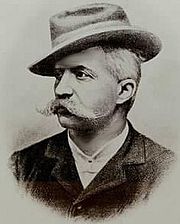
The balance of power between the Chamber and Senate initially shifted in favor of the Senate, composed mainly of nobles and industrial figures. Little by little, the Chamber of Deputies took on more and more importance with the evolution of the bourgeoisie and the large landowners, concerned with economic progress, but supporters of order and a certain social conservatism.[18]
The Republicans took part in the elections to the Italian Parliament, and in 1853 they formed the Action Party around Giuseppe Mazzini. Although in exile, Mazzini was elected in 1866, but refused to take his seat in parliament. Carlo Cattaneo was elected deputy in 1860 and 1867, but refused so as not to have to swear loyalty to the House of Savoy. The problem of the oath of loyalty to the monarchy, necessary to be elected, was the subject of controversy within the republican forces. In 1873 Felice Cavallotti, one of the most committed Italian politicians against the monarchy, preceded his oath with a declaration in which he reaffirmed his republican beliefs.[19] In 1882, a new electoral law lowered the census limit for voting rights, increasing the number of voters to over two million, equal to 7% of the population.[20] In the same year the Italian Workers' Party was created, which in 1895 became the Italian Socialist Party.[18] In 1895 the intransigent republicans agreed to participate in the political life of the Kingdom, establishing the Italian Republican Party. Two years later, the far left reached its historical maximum level in Parliament with 81 deputies, for the three radical-democratic, socialist components and Republican. With the death of Felice Cavallotti in 1898, the radical left gave up on posing the institutional problem.[21]
In Italian politics, the socialist party progressively divided into two tendencies: a maximalist one, led among others by Arturo Labriola and Enrico Ferri, and supporting the use of strikes; the other, reformist and pro-government, was led by Filippo Turati. A nationalist movement emerged, led in particular by Enrico Corradini, as well as a Catholic social and democratic movement, the National Democratic League, led by Romolo Murri. In 1904, Pope Pius X authorized Catholics to participate individually in political life,[22] but in 1909 he condemned the National Democratic League created by Romolo Murri, who was excommunicated.[23] Finally, a law of 3 June 1912 marked Italy's evolution towards a certain political liberalism by establishing universal male suffrage. In 1914, at the outbreak of World War I, Italy began to be counted among the world's liberal democracies.[22]
Fascism
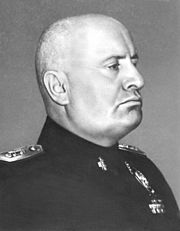
After World War I, Italian political life was animated by four great movements. Two of these movements were in favor of democratic development within the framework of existing monarchical institutions: the reformist socialists and the Italian People's Party. Two other movements challenged these institutions: the Republican Party on the one hand, and the maximalist socialists. In the 1919 elections, the parties most imbued with republican ideology (the maximalist socialists and the Republican Party) won, obtaining 165 out of 508 seats in the Chamber of Deputies.[24] In the 1921 elections, after the foundation of the Italian Communist Party, the three parties republican, maximalist socialist and communist obtained 145 deputies out of 535. Overall, at the beginning of the interwar period, less than 30% of those elected were in favor of the establishment of a republican regime.[25] In this context, the rise of Benito Mussolini's fascist movement was based on the bitterness generated by the "mutilated victory", the fear of social unrest and the rejection of revolutionary, republican and Marxist ideology. The liberal political system and part of the aristocracy chose to erect fascism as a bulwark against, in their way of seeing, these dangers.[26]
In October 1922, the nomination of Benito Mussolini as Prime Minister by King Victor Emmanuel III, following the march on Rome, paved the way for the establishment of the dictatorship. The Albertine Statute is progressively emptied of its content. Parliament was subject to the will of the new government.[b] The legal opposition disintegrated. On 27 June 1924, 127 deputies left Parliament and retreated to the Aventine Hill, a clumsy maneuver which, in effect, left the field open to the fascists. They then had the fate of Italy in their hands for two decades.[26]
Not only did Victor Emmanuel III appeal to Mussolini to form the government in 1922 and allow him to proceed with the domestication of Parliament, but he did not even draw the consequences of the assassination of Giacomo Matteotti in 1924. He accepted the title of emperor in 1936 at the end of Second Italo-Ethiopian War, then the alliance with Nazi Germany and Italy's entry into World War II on 10 June 1940.[27]
Anti-fascist parties in Italy and abroad
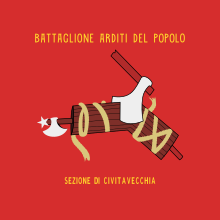
With the implementation of fascist laws (Royal Decree of 6 November 1926), all political parties operating on Italian territory were dissolved, with the exception of the National Fascist Party. Some of these parties expatriated and reconstituted themselves abroad, especially in France. Thus an anti-fascist coalition was formed on 29 March 1927 in Paris, the "Concentrazione Antifascista Italiana", which brought together the Italian Republican Party, the Italian Socialist Party, the Socialist Unitary Party of Italian Workers, the Italian League for Human Rights and the foreign representation of the Italian General Confederation of Labour. Some movements remained outside, including the Italian Communist Party, the popular Catholic movement and other liberal movements.[28] This coalition dissolved on 5 May 1934 and, in August of the same year, the pact of unity of action was signed between the Italian Socialist Party and the Italian Communist Party.[29]
In the meantime, in Italy, clandestine anti-fascist nuclei were formed, in particular in Milan with Ferruccio Parri and in Florence with Riccardo Bauer.[29] Under the impetus of these groups, the Action Party, Mazzini's former republican party, was re-established.[29][c] Between the end of 1942 and the beginning of 1943, Alcide De Gasperi wrote The reconstructive ideas of Christian Democracy, which laid the foundations of the new Catholic-inspired party, the Christian Democracy. It brought together the veterans of Luigi Sturzo's Italian People's Party and the young people of Catholic associations, in particular of the University Federation.[30]
Institutional crisis
On 10 July 1943, the Allies landed in Sicily in Operation Husky. On 25 July 1943, Victor Emmanuel III revoked Mussolini's mandate as prime minister and had him arrested, entrusting the government to Marshal Pietro Badoglio. The new government contacted the Allies to reach an armistice. When the Armistice of Cassibile was announced on 8 September 1943, the Germans reacted by placing under their control all the part of Italian territory that still escaped the Allied advance and by disarming the Italian Royal Army. Victor Emmanuel III and Badoglio's government fled Rome and reached Brindisi, in southern Italy. The war continued, but was also accompanied by the Italian Civil War, with the creation by Mussolini of the Italian Social Republic, heavily dependent on the Germans,[31] and by the division of Italy into two antagonistic territories, one occupied by the allied forces, the other occupied by Nazi Germany.[32] In these dramatic circumstances, in the two territories the civil administration gave way to a military and police administration. However, the parties that existed before fascism were reconstituted, alongside new political parties.[33]

On 9 September 1943, in Rome (still occupied by the Germans), a National Liberation Committee (CLN) was created, which brought together the parties and movements opposed to fascism and German occupation. It was made up of representatives of the Italian Communist Party, members of the Action Party, Christian Democrats, liberals, socialists and progressive democrats. The National Liberation Committee gave priority to the fight against the Nazi-fascists, postponing the question of the institutional form of the Italian state until after the victory, but made the abdication of the king in favor of his son a prerequisite for the establishment of an anti-fascist government.[34] The patriotic war of liberation led by the National Liberation Committee was also, for a significant part of its supporters, a war of social liberation, a war against a collaborationist elite.[35] However, the Americans and English, anxious to prepare for the post-war period, facilitated the entry into German-occupied territory of Italian democratic and republican activists aimed at counterbalancing the communist influence in the leadership of the National Liberation Committee. This was the case, for example, of Leo Valiani,[36] future member of the triumvirate responsible for the partisan insurrection in Piedmont and Lombardy.[27]
Institutional truce
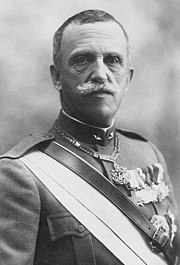
On 31 March 1944, in Salerno, Palmiro Togliatti, general secretary of the Italian Communist Party, called for the formation of a government of national unity and no longer required the king's abdication as a prerequisite. This declaration pushed the parties of the National Liberation Committee to rally around a compromise drawn up by Enrico De Nicola, president of the Chamber of Deputies until 1924, by Benedetto Croce of the liberal party and by the king's entourage. As foreseen in this agreement, upon the liberation of Rome, on 4 June 1944, Victor Emmanuel III proclaimed his son Umberto lieutenant general of the kingdom, and the parties took political control of the nation,[37] even if the war continued, stabilizing on the front on the Gothic line until April 1945.[32]
From June 1944 to December 1945, three provisional coalition governments followed one another. The first was led by Ivanoe Bonomi, of the Italian Socialist Party. His government included the anti-fascist liberals Carlo Sforza and Benedetto Croce, as well as Palmiro Togliatti. Although temporarily put aside, the question of Italian institutions remained one of the main open political questions. Most of the forces supporting the National Liberation Committee were openly republicans and believed that the monarchy, in particular Victor Emmanuel III, had had a responsibility in the success of the fascist movement.[33] The final agreement between the parties was to ask that at the end of the war, as soon as conditions were favourable, the calling of elections, an institutional referendum and the formation of a constituent assembly.[38] Until then, on 31 January 1945, the Council of Ministers, chaired by Ivanoe Bonomi, issued a decree which recognized women's right to vote.[39] Universal suffrage was thus recognized, after the vain attempts made in 1881 and 1907 by women of the various parties.
The Bonomi governments (II then III) were succeeded by the Parri government in June 1945, then by the First De Gasperi government in December 1945.[40] The question of the future form of the state, monarchy or republic, absorbed the minds of political circles. The majority of Christian Democratic activists, especially young people, increasingly distanced themselves from the monarchy. During the local meetings of the leaders of this party, in Rome and Milan, motions were presented aimed at making official a political line favorable to a democratic republic. The central political office tried to curb these pressures and maintain an intermediate position.[41]
Organization of the institutional referendum and results
Organization
On 16 March 1946, Prince Umberto decreed, as expected in 1944, that the question of the institutional form of the state would be decided by a referendum organized simultaneously with the election of a constituent assembly. The date was set for 2 June 1946.[d] The Supreme Court of Cassation was responsible for examining the appeals. Its role was to be limited to observing the progress of voting operations and consolidating the bulletins issued by the offices that communicated the results in each constituency. The counting of the ballots of the candidates for the constituent assembly had to precede that of the referendum. If the monarchy had won, it would have been the Constituent Assembly that would have had to choose the head of state.[42]
Abdication and departure of King Victor Emmanuel III

Wanted by the Allies to verify that the conditions existed for voting in a country torn apart by the civil war only a few months earlier, partial municipal and provincial elections were held in March and April 1946 in half of the Italian municipalities and provinces.[43] These elections, which mainly involved left-wing cities, brought out three parties, with a clear advantage for the Christian Democrats, led by Alcide De Gasperi, which exceeded the sum of votes cast for the Italian Communist Party and the Italian Socialist Party. After these administrative elections, the monarchists, already worried about the outcome of the referendum, became even more discouraged.[44]
But a political event changed the situation during the referendum campaign. A month before the referendum, Victor Emmanuel III abdicated in favor of his son Umberto, who was proclaimed king and took the name Umberto II. The act of abdication, drawn up privately, is dated 9 May 1946. This abdication was desired by the monarchists, since the crown prince was less compromised than his father in Mussolini's rise to power and in coexistence with the fascist forces. It is also possible that the command of the allied forces present on Italian territory encouraged the sovereign to abdicate in favor of his son.[45] The former king immediately left Italy for Alexandria in Egypt. Umberto II confirmed his promise to respect the popular decision regarding the referendum. The representatives of the parties in favor of the Republic protested, arguing the assumption of royal powers by the lieutenant general conflicted with an article of the legislative decree of 16 March 1946 that aimed at guaranteeing institutional stability before the announcement of the results. For observers, the gap between republicans and monarchists was narrowing, which increased tension in the final phase of the electoral campaign. In fact, some scuffles broke out between activists of the two sides in the tense climate.[46]
Counting of referendum ballots


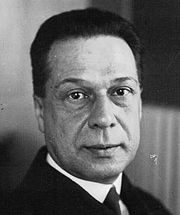
The vote for the choice between monarchy or republic took place on 2 June and on the morning of 3 June 1946. After the transfer of the electoral cards from all of Italy and the minutes of the 31 constituencies to Rome, the results were expected on 8 June.[45] On 10 June, the still provisional results were announced, and the final ones were communicated later due to missing data in some polling stations and after the examination of numerous appeals regarding the contested referendum ballots. In fact, 21,000 disputes occurred over the referendum ballots, most of which were quickly resolved. However, the period of uncertainty between the end of the vote and the final official announcement of the results only strengthened tensions in the country.[43] In the city of Naples, in Apulia, in Calabria and in Sicily, the monarchists carried out protest demonstrations, sometimes violent.[45] On 7 June, a monarchist student, soon transformed into a martyr, was killed.[47]
One of the complaints submitted to the Supreme Court of Cassation is particularly delicate. This controversy was over the definition of "majority". The monarchists believed that it was necessary to take into account not the majority of votes cast, but the "majority of electors", as an article of the electoral law provided. The public prosecutor of the Supreme Court of Cassation, Massimo Pilotti, deemed this appeal admissible. In his indictment Pilotti believed that the spirit and letter of the decrees as well as jurisprudence provide for the counting of voters, without excluding blank or invalid ballots. But the Supreme Court of Cassation ruled against him, with 12 votes against to 7.[45][48] On the one hand, it was believed that the vote, as a legal act, manifested a will and that the blank or null vote could be assimilated to the absence of expression of will. The Supreme Court of Cassation also identified another decree which specified that only "validly cast" votes should be preserved. The Supreme Court of Cassation finally announced that no law or decree dealt with the need for an absolute majority.[48]
The final results were announced on 18 June 1946.[49] According to these results, 24,947,187 people participated in the vote, or 89% of the electorate.[50] The official results of the referendum recorded 12,718,641 votes for the republic, or 54.3% of the votes cast, and 10,718,502 votes for the monarchy, or 45.7%. 1,498,136 ballots were annulled.[50] The analysis of the data by region showed an Italy practically divided in two: in the North the Republic won with 66.2% of the votes cast, and the Monarchy in the South with 63.8% of the votes.[50]
The supporters of the republic chose the effigy of the Italia turrita, the national personification of Italy, as their unitary symbol to be used in the electoral campaign and on the referendum ballot on the institutional form of the State, in contrast to the Savoy coat of arms, which represented the monarchy.[51][52] This triggered various controversies, given that the iconography of the allegorical personification of Italy had, and still has, a universal and unifying meaning that should have been common to all Italians and not only to a part of them: this was the last appearance in the institutional context of Italia turrita.[53]
However, some voters were unable to vote. Before the closure of the electoral lists in April 1945, many Italian soldiers were still outside the national territory, in detention or internment camps abroad.[54] Citizens of the provinces of Bolzano, Gorizia, Trieste, Pola, Fiume and Zara, located in territories not administered by the Italian government but by the Allied authorities, which were still under occupation pending a final settlement of the status of the territories (in fact in 1947 most of these territories were then annexed by Yugoslavia after the Paris peace treaties of 1947, such as most of the Julian March and the province of Zara).[55] These provinces, however, were all located in the north of the country, an area where the Republican vote obtained a fairly large majority.[56]
Details of the referendum results
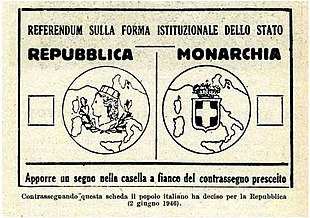
| Choice | Votes | % |
|---|---|---|
| 12,718,641 | 54.27 | |
| Monarchy | 10,718,502 | 45.73 |
| Valid votes | 23,437,143 | 93.95 |
| Invalid or blank votes | 1,509,735 | 6.05 |
| Total votes | 24,946,878 | 100.00 |
| Registered voters/turnout | 28,005,449 | 89.08 |
| Source: Official Gazette | ||
| Institutional referendum results (excluding invalid votes) | |
|---|---|
| Republic 12,718,641 (54.3%) |
Monarchy 10,718,502 (45.7%) |
| ▲ 50% | |
By district

The conservative, rural Mezzogiorno (southern Italy) region voted solidly for the monarchy (63.8%) while the more urbanised and industrialised Nord (northern Italy) voted equally firmly for a republic (66.2%).[57]
| District | Provinces | Voters | Turnout | |||||
|---|---|---|---|---|---|---|---|---|
| Votes | % | Votes | % | |||||
| Aosta | Aosta | 28,516 | 63.47 | 16,411 | 36.53 | 50,946 | 84.00 | |
| Turin | Turin • Novara • Vercelli | 803,191 | 59.90 | 537,693 | 40.10 | 1,426,036 | 91.12 | |
| Cuneo | Cuneo • Alessandria • Asti | 412,666 | 51.93 | 381,977 | 48.07 | 867,945 | 89.75 | |
| Genoa | Genoa • Imperia • La Spezia • Savona | 633,821 | 69.05 | 284,116 | 30.95 | 960,214 | 85.62 | |
| Milan | Milan • Pavia | 1,152,832 | 68.01 | 542,141 | 31.99 | 1,776,444 | 90.31 | |
| Como | Como • Sondrio • Varese | 422,557 | 63.59 | 241,924 | 36.41 | 715,755 | 90.98 | |
| Brescia | Brescia • Bergamo | 404,719 | 53.84 | 346,995 | 46.16 | 805,808 | 91.67 | |
| Mantua | Mantua • Cremona | 304,472 | 67.19 | 148,668 | 32.81 | Zdroj:https://en.wikipedia.org?pojem=1946_Italian_institutional_referendum|||
